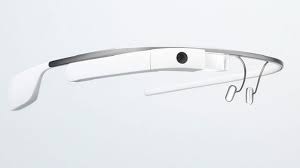 Google’s wearable Glass product, which clamps onto the user’s face like glasses and provides on-command field-of-vision computing, is reportedly stepping into music in a few ways.
Google’s wearable Glass product, which clamps onto the user’s face like glasses and provides on-command field-of-vision computing, is reportedly stepping into music in a few ways.
First, predictably, Glass will interact with the Google Play Music service, enabling song, album, and playlist listening through voice command. This function is available now via a “sideloading” procedure which requires using Android Developer Tools — beyond the ken of most users, but a clear indicator that the feature will get baked into Glass soon.
Glass would need some way to get the audio into the user’s ear, and USA Today reports that Google has designed ear buds for Glass.
In a related Glass update, Google has introduced sound search — a feature wherein the user asks the device what music is playing within earshot, and the song is identified. That sort of music recognition intelligence is not new, Shazam being the most prominent application.
 The mobile music trend is pointing toward moving its controls off the smartphone, onto smaller and more wearable devices. Directionally, this trend matches the thrust of streaming music services, which seek to deliver highly customized audio untethered from the geographic restriction of radio and the desktop restriction of traditional computing.
The mobile music trend is pointing toward moving its controls off the smartphone, onto smaller and more wearable devices. Directionally, this trend matches the thrust of streaming music services, which seek to deliver highly customized audio untethered from the geographic restriction of radio and the desktop restriction of traditional computing.
Smartwatches represent one product manifestation of the trend. The recently released Samsung Gear smartwatch is a wrist-worn controller for some Samsung Galaxy smartphones. The usage theory driving this sort of product is that the phone, pocketable though it be, is too clunky a device for easy music management on the go. (And management of some other smartphone functions.) Putting music control on the wrist is certainly convenient, and harkens back to strap-on MP3 players of several years ago.
Glass is the most high-profile example of a wearable computing device. The proximity of the thing to the user’s ears, and its native voice control, makes it natural as a music player. It doesn’t hurt that Glass is sitting right on the user’s ears, too.
Where does radio fit in? If our music systems will eventually move right onto our bodily accessories, radio should focus on distributing there as importantly as distributing into the car. The integration might happen most felicitously via aggregating apps like iHeartRadio, but we can also imagine AM/FM receiver technology adapting to Glass and other devices that will inevitably come to market, much as NextRadio is pushing enhanced radio into smartphones.
By the way, the next step in the mobile product evolution would be embeddable devices, in which our bodies become the devices. The “yuck factor” might make that scenario unimaginable … but technology does march on. What stream (or frequency) are you tuned to?
